HSP90 Inhibitor, 17-DMAG, Alone and in Combination with Lapatinib Attenuates Acquired Lapatinib-Resistance in ER-positive, HER2-Overexpressing Breast Cancer Cell Line
- PMID: 32942617
- PMCID: PMC7564044
- DOI: 10.3390/cancers12092630
HSP90 Inhibitor, 17-DMAG, Alone and in Combination with Lapatinib Attenuates Acquired Lapatinib-Resistance in ER-positive, HER2-Overexpressing Breast Cancer Cell Line
Abstract
Lapatinib, a Human Epidermal growth factor Receptor 2 (HER2)-targeting therapy in HER2-overexpressing breast cancer, has been widely used clinically, but the prognosis is still poor because most patients acquire resistance. Therefore, we investigated mechanisms related to lapatinib resistance to evaluate new therapeutic targets that may overcome resistance. Lapatinib-resistant cell lines were established using SKBR3 and BT474 cells. We evaluated cell viability and cell signal changes, gene expression and protein changes. In the xenograft mouse model, anti-tumor effects were evaluated using drugs. Analysis of the protein interaction network in two resistant cell lines with different lapatinib resistance mechanisms showed that HSP90 protein was commonly increased. When Heat Shock Protein 90 (HSP90) inhibitors were administered alone to both resistant cell lines, cell proliferation and protein expression were effectively inhibited. However, inhibition of cell proliferation and protein expression with a combination of lapatinib and HSP90 inhibitors showed a more synergistic effect in the LR-BT474 cell line than the LR-SKBR3 cell line, and the same result was exhibited with the xenograft model. These results suggest that HSP90 inhibitors in patients with lapatinib-resistant Estrogen Receptor (ER) (+) HER2 (+) breast cancer are promising therapeutics for future clinical trials.
Keywords: ER (+) HER2 (+); HSP90; breast cancer; lapatinib resistance.
Conflict of interest statement
The authors declare no conflict of interest.
Figures
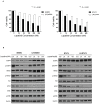
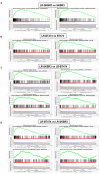
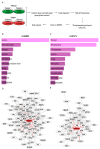
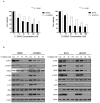
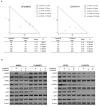
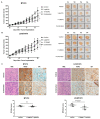
Similar articles
-
HSP90 inhibitor, AUY922, debilitates intrinsic and acquired lapatinib-resistant HER2-positive gastric cancer cells.BMB Rep. 2018 Dec;51(12):660-665. doi: 10.5483/BMBRep.2018.51.12.259. BMB Rep. 2018. PMID: 30591093 Free PMC article.
-
A preclinical evaluation of the MEK inhibitor refametinib in HER2-positive breast cancer cell lines including those with acquired resistance to trastuzumab or lapatinib.Oncotarget. 2017 Jul 22;8(49):85120-85135. doi: 10.18632/oncotarget.19461. eCollection 2017 Oct 17. Oncotarget. 2017. PMID: 29156708 Free PMC article.
-
Activated estrogen receptor-mitogen-activated protein kinases cross talk confer acquired resistance to lapatinib.Thorac Cancer. 2015 Nov;6(6):695-703. doi: 10.1111/1759-7714.12239. Epub 2015 Feb 13. Thorac Cancer. 2015. PMID: 26557906 Free PMC article.
-
Lapatinib.Recent Results Cancer Res. 2018;211:19-44. doi: 10.1007/978-3-319-91442-8_2. Recent Results Cancer Res. 2018. PMID: 30069757 Review.
-
Lapatinib: a small-molecule inhibitor of epidermal growth factor receptor and human epidermal growth factor receptor-2 tyrosine kinases used in the treatment of breast cancer.Clin Ther. 2009;31 Pt 2:2332-48. doi: 10.1016/j.clinthera.2009.11.029. Clin Ther. 2009. PMID: 20110044 Review.
Cited by
-
HSP90 inhibitors and cancer: Prospects for use in targeted therapies (Review).Oncol Rep. 2023 Jan;49(1):6. doi: 10.3892/or.2022.8443. Epub 2022 Nov 11. Oncol Rep. 2023. PMID: 36367182 Free PMC article. Review.
-
Protein tyrosine kinase inhibitor resistance in malignant tumors: molecular mechanisms and future perspective.Signal Transduct Target Ther. 2022 Sep 17;7(1):329. doi: 10.1038/s41392-022-01168-8. Signal Transduct Target Ther. 2022. PMID: 36115852 Free PMC article. Review.
-
Targeting Heat-Shock Protein 90 in Cancer: An Update on Combination Therapy.Cells. 2022 Aug 17;11(16):2556. doi: 10.3390/cells11162556. Cells. 2022. PMID: 36010632 Free PMC article. Review.
-
The Chaperone System in Breast Cancer: Roles and Therapeutic Prospects of the Molecular Chaperones Hsp27, Hsp60, Hsp70, and Hsp90.Int J Mol Sci. 2022 Jul 14;23(14):7792. doi: 10.3390/ijms23147792. Int J Mol Sci. 2022. PMID: 35887137 Free PMC article. Review.
-
Heat shock proteins as hallmarks of cancer: insights from molecular mechanisms to therapeutic strategies.J Hematol Oncol. 2024 Sep 4;17(1):81. doi: 10.1186/s13045-024-01601-1. J Hematol Oncol. 2024. PMID: 39232809 Free PMC article. Review.
References
-
- Press M.F., Bernstein L., Thomas P.A., Meisner L.F., Zhou J.Y., Ma Y., Hung G., Robinson R.A., Harris C., El-Naggar A., et al. HER-2/neu gene amplification characterized by fluorescence in situ hybridization: Poor prognosis in node-negative breast carcinomas. J. Clin. Oncol. Off. J. Am. Soc. Clin. Oncol. 1997;15:2894–2904. doi: 10.1200/JCO.1997.15.8.2894. - DOI - PubMed
-
- DiGiovanna M.P., Stern D.F., Edgerton S.M., Whalen S.G., Moore D., 2nd, Thor A.D. Relationship of epidermal growth factor receptor expression to ErbB-2 signaling activity and prognosis in breast cancer patients. J. Clin. Oncol. Off. J. Am. Soc. Clin. Oncol. 2005;23:1152–1160. doi: 10.1200/JCO.2005.09.055. - DOI - PubMed
-
- Nieto Y., Nawaz F., Jones R.B., Shpall E.J., Nawaz S. Prognostic significance of overexpression and phosphorylation of epidermal growth factor receptor (EGFR) and the presence of truncated EGFRvIII in locoregionally advanced breast cancer. J. Clin. Oncol. Off. J. Am. Soc. Clin. Oncol. 2007;25:4405–4413. doi: 10.1200/JCO.2006.09.8822. - DOI - PubMed
Grants and funding
LinkOut - more resources
Full Text Sources
Research Materials
Miscellaneous

